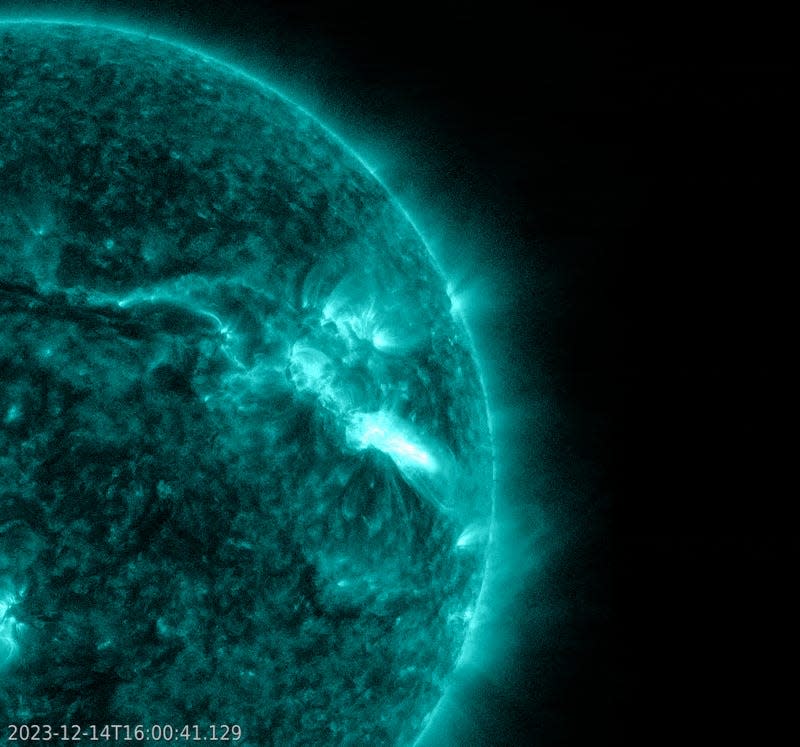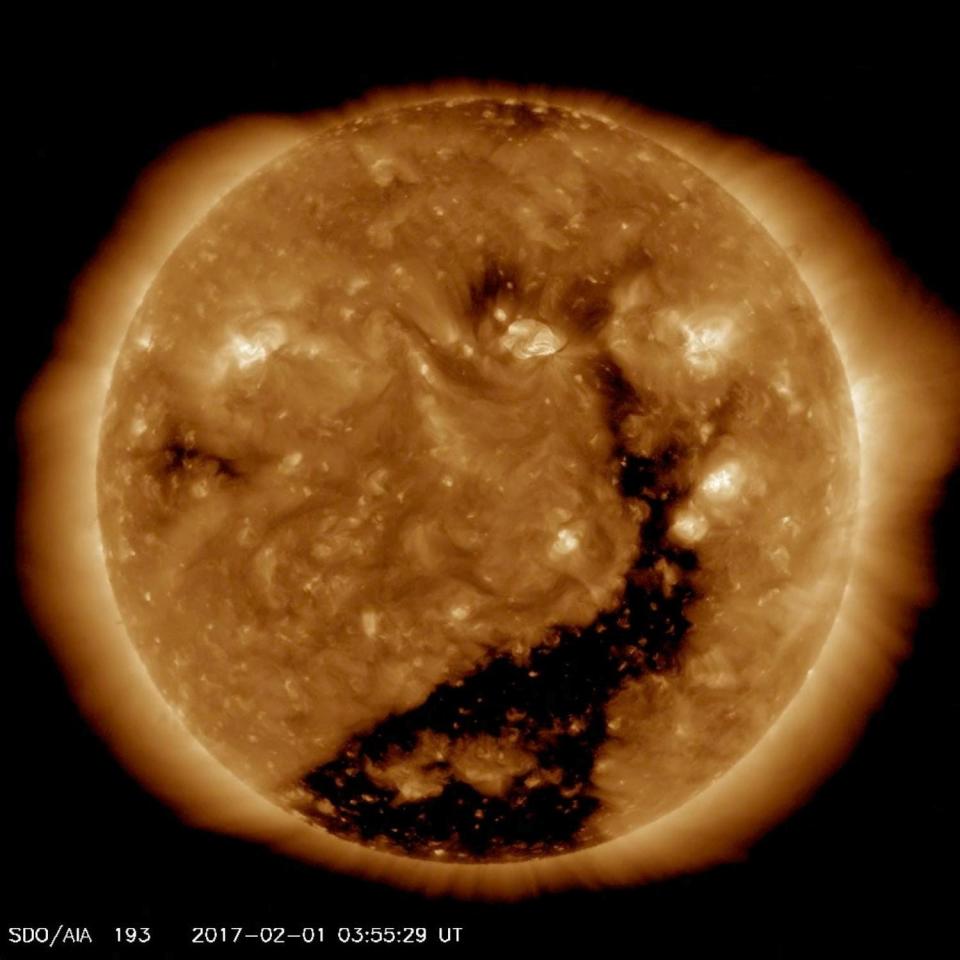-
A powerful solar storm due to hit the Earth on Tuesday could spark brilliant auroras.
-
Auroras could be seen as far south as Wyoming, Wisconsin, and New York.
-
Expect to see more auroras in coming months now that the sun has reached peak activity.
A pair of powerful geomagnetic storms are due to strike Earth on Tuesday and Wednesday, causing dazzling auroras across the planet which may be seen farther south than usual.
The coming auroras have been predicted after the sun recently released some plasma during two coronal mass ejections that are currently traveling toward us at breakneck speeds.
The National Oceanic and Atmospheric Administration predicts the first wave of plasma will reach the Earth on Tuesday, exciting our outer atmosphere and helping auroras shine.
NOAA added that neither CME is expected to hit Earth directly, making it difficult to forecast the aurora’s intensity and when exactly it will appear. It could begin as early as sunrise or as late as after nightfall.
The forecast currently shows that the auroras could reach as low as Wyoming, Wisconsin, and New York in the US. On the other side of the globe, auroras could appear across Scotland, Northern Ireland, and parts of northern England.

Tonight’s aurora forecast shows that the aurora could appear lower than usual.NOAA
Here’s how to spot the dazzling spectacle:
How to spot and snap the aurora
Before heading out, check the aurora forecast on the NOAA website to see if you can see the aurora in your area.
NOAA predicts the first storm could hit as a strong (G3) storm and the second is expected to be minor (G1).
Geomagnetic storms are notoriously hard to forecast and when it reaches the Earth, the storm could be weaker. Or it could be stronger.
An example is a G4 storm that hit the Earth in March of 2023 and caused aurora seen as far as Phoenix, Arizona. It had originally been expected to be a G3, but a later eruption of the sun made the storm more powerful.

Auroras in La Crosse, Wisconsin on March 24, 2023.NWS La Crosse
NOAA said it will have a better idea of the New Year’s Eve forecast when the CMEs reach 1 million miles from Earth, about 30-60 minutes before they strike our planet.
If you have clear skies, head for a place where there is low light pollution, away from city lights.
Prepare for cold weather with blankets and hot beverages. You may have used your phone or looked at screens to get you where you need to go, so be patient, and let your eyes adjust to the darkness.
You can try to snap pictures of the auroras with a camera, but make sure not to transfer it too quickly from a hot to a cold environment to avoid condensation, according to the Royal Photographic Society.
Preset your camera before leaving a warmer space so your fingers don’t get too cold — higher aperture may be better, but you may have to adjust your settings if the aurora is moving quickly (you can find information on how to set SLR cameras here.)
This storm is caused by a powerful solar flare

The sun ejected this X-class solar flare in 2023.NASA/SDO
The sun has been especially active over the last 48 hours. It’s released many M-class solar flares as well as an X-class flare — the most powerful type.
The radiation from these flares travel at the speed of light. Some reached Earth, causing some minor radio signal blackouts over the last couple of days.
Some of the flares also hurtled two coronal mass ejections (CME), a cloud of plasma and magnetic fields, toward our planet.
The first CME scheduled to reach our planet on New Year’s Eve is likely associated with a recent M2 solar flare. The CME left the sun on Sunday at 1 a.m. ET, according to SpaceWeatherLive.
CMEs travel more slowly, though they can still reach speeds of about 600 miles per second. As the CME reaches our ionosphere — a charged layer that surrounds the Earth — it will excite particles in the sky that light up to create the aurora.
Expect more of these aurora-brightening solar events in the coming months

A coronal hole rotates across the face of the sun, streaming solar wind towards Earth in 2017.NASA/GSFC/Solar Dynamics Observatory
Powerful geomagnetic storms are becoming more common now that the sun has reached solar maximum, which happens when our star’s poles flip, causing havoc with magnetic fields at the solar surface.
As the sun’s peak activity continues we can also expect to see more stunning solar phenomena like a plasma vortex, a massive coronal “hole” in our sun, and a solar “tornado”.
Space weather isn’t just pretty
If this week’s solar storm hits at a G3 level, there shouldn’t be much adverse effect on our planet’s infrastructure.
However, because our sun is at solar maximum, scientists have warned that we could be at higher risk for more powerful solar storms — up to G5.
These bursts of electromagnetic energy can be quite dangerous, as they affect everything from the power grid to GPS signals.
As the magnetic fields from the sun crash into the Earth, they can also cause grid surges that can overwhelm power systems and underwater pipelines.
On March 10, 1989, a huge solar flare caused a storm that surged the Quebec power grid, which was out of commission for eight long hours on a weekday morning, affecting about 6 million people.
Moreover, geostorms can make the atmosphere more dense which can crash satellites, as was the case in February 2022, when 40 of 49 of SpaceX’s Starlink satellites launched into orbit were knocked out of commission.
Charged particles from the sun can also glitch electronic materials. This usually goes unnoticed, but on rare occasions, these particles have been linked to water mines exploding. People have even attributed their pacemaker glitches to these solar particles.
This story was originally published on April 24, 2023, and was updated to reflect information from the latest storm due to cause bright auroras.
Read the original article on Business Insider
